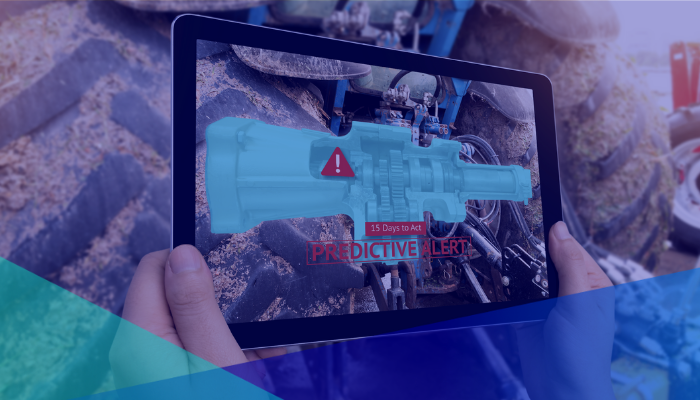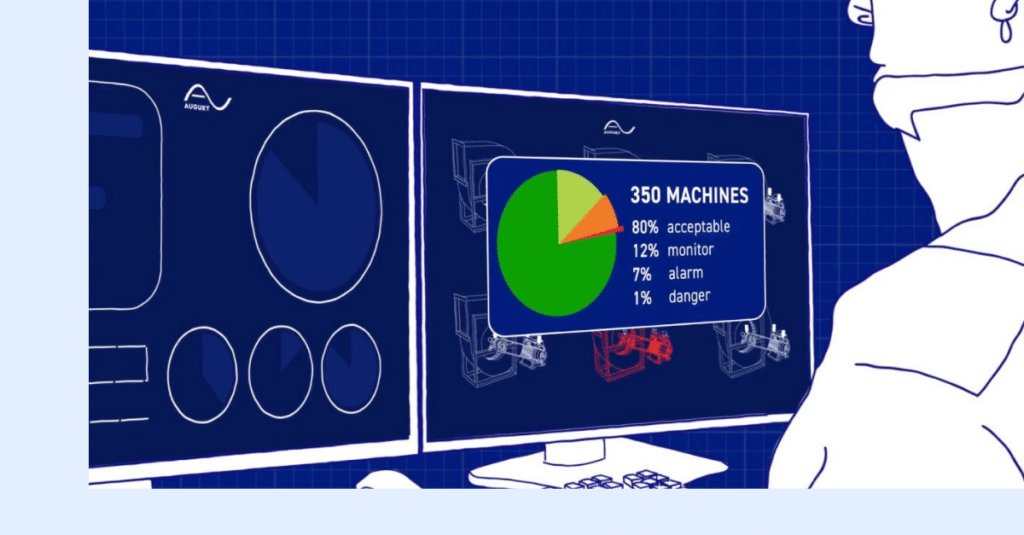
Many manufacturers embrace predictive maintenance as the current pinnacle of maintenance methodologies. It’s the industry standard for monitoring and servicing machines, and if you’re not already doing it, you’re behind the curve.
While predictive maintenance remains the standard, a new and improved method is fast approaching. Truly competitive manufacturers are moving beyond predictive maintenance to develop a prescriptive approach. In addition to showing technicians when and where they need to work, prescriptive maintenance shows them exactly what to do. Machine health sensors monitor for impending issues, then automatically trigger alerts that show maintenance workers how to remedy the root cause of those issues.
The Principles Of Prescriptive Maintenance
To better understand the impact prescriptive maintenance, here are the key points:
- Prescriptive takes the next step beyond predictive: thanks to sophisticated AI, it tells you what the real-time problems are, how to fix it, and in what time frame.
- In other words, It’s the full diagnostic package.
- And since prescriptive takes this next step, predictive is doomed to extinction.
- Unfortunately, the manufacturing industry is proving slow to recognize this inevitability. And companies who are not jumping aboard are simply losing easily-gained value.
Meanwhile, the prescriptive aspect proves crucial for machine health. With predictive maintenance, the root cause of a problem remains a mystery until a technician arrives to diagnose it onsite. Before the technician arrives, machines might continue to run and make the problem worse. Technicians could also take hours or days to find the problem, causing a lengthy period of machine downtime. Prescriptive maintenance, on the other hand, prevents either scenario by using data analytics to identify what’s compromising machine health and recommend the most efficient course of action that can produce a long-lasting solution. Prescriptive maintenance is more targeted, actionable, and detailed — exactly what facilities need for more efficient and productive machines.
Prescriptive Maintenance and Manufacturing Efficiency
Throughout history, and even into the more recent era of predictive maintenance, providing the care and attention machines require has been a huge obstacle to production. Even if technicians are able to catch problems early, there’s no telling how long it will take to perform repairs and how wide the disruption will spread if a whole line needs to shut down.
Prescriptive maintenance brings factories one huge step closer to the ideal of perfect machine health. When technicians know exactly what fixes a machine requires, they can order parts preemptively, shut down production selectively, and make the fix as swiftly as possible with confidence that the issue is fully resolved.
Prescriptive maintenance also enables a workforce transformation. With the diagnosis done and the necessary work clearly outlined, less-skilled technicians can work on machines under the guidance of a master technician who monitors machine health remotely across facilities.
Prescriptive machine health monitoring also helps with provisioning technicians by informing which machines to work on when to schedule maintenance, and what parts or tools to bring — ensuring technicians can have the utmost impact with every job.
Of all the ways to increase productivity in manufacturing, few have as deep or dynamic an impact as prescriptive maintenance.
Machine Health Monitoring Elevates Maintenance From Predictive to Prescriptive
The shortcomings of predictive maintenance become apparent early on. Technicians start to get flooded with alerts that things like temperature or vibration have exceeded acceptable thresholds, but there’s no way to respond to every alert, and no way to know which alerts truly require attention because they might not indicate what’s actually going wrong.
The difference between predictive maintenance and prescriptive maintenance is a machine health monitoring platform that can take sensor data and turn it into actionable information. When machine measurements pass beyond an acceptable threshold, AI diagnoses the malfunction and technicians don’t just receive an alert that says ‘something is wrong’— they get detailed information about why temperatures or vibrations are rising, as well as informed recommendations about when and how they should address that issue. Alerts function more like updates that keep technicians informed about machine health, so they can make the best use of their time.
At production facilities where predictive maintenance is already the norm, it doesn’t take much to advance to a prescriptive approach. Presumably, these facilities already have sensors installed on some or all of the equipment. They have the necessary machine health data. Now, they need a platform for continuous machine health monitoring that can turn massive amounts of machine health data into clear and actionable insights. That way, technicians can spend significantly less time determining what to do and focus all of their efforts on minimizing machine downtime and maximizing manufacturing efficiency.
Augury is at the forefront of the prescriptive maintenance revolution. Our machine health monitoring platform transforms how technicians work and, as a result, how production proceeds. Don’t settle for advanced warnings about when machines need maintenance. Send technicians into the field equipped and empowered to make the greatest impact.




